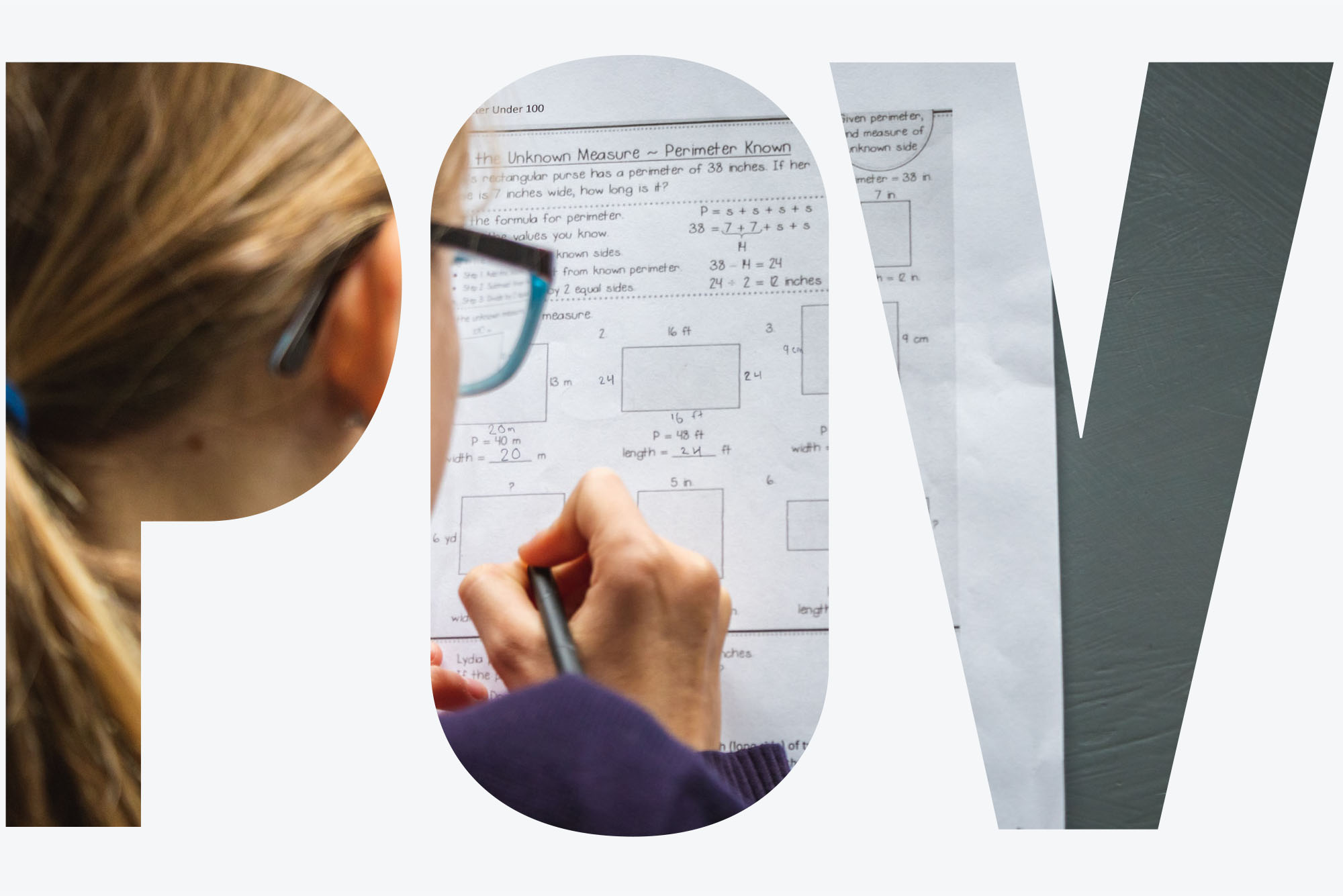POV: Plummeting Math Achievement Scores Confirm Pandemic’s Impact on US Public School Students

Photo by Greg Rosenke/Unsplash
POV: Plummeting Math Achievement Scores Confirm Pandemic’s Impact on US Public School Students
“The results strongly suggest a need to invest in strategies to offset the costs of COVID on student achievement”
The recently released scores on the National Assessment of Educational Progress (NAEP) are consistent with the widespread suspicion that the pandemic took a major toll on public school students in the United States. Although it remains difficult to distinguish clear patterns in why achievement has declined in some areas more than others, the results strongly suggest a need to invest in strategies to offset the costs of the pandemic on student achievement.
NAEP is an especially valuable tool both because of its widely recognized rigor relative to state-administered tests and because it has been administered by the US Department of Education to nationwide representative samples of students for decades and thus represents our best look at changes in student achievement over time. The main national results, released in October, show the largest decline occurred in eighth grade math, which fell by eight points compared to 2019. Math scores among fourth graders also declined—by five points—making these the lowest math achievement levels since the early 2000s. Although the drop in reading was less pronounced—at three points in both grades—they again marked the lowest levels in nearly two decades.
The state-level NAEP results, also released in October, highlight the near universal declines across the country. While some states fared slightly better than others, nearly all saw declines, especially in math. Massachusetts typically scores at or near the top of all states and remained near the top again in 2022. However, scores in Massachusetts followed national trends and dropped sharply since 2019. Math scores dropped by 6 points in fourth grade and more than 10 points in eighth grade, marking the lowest level since 2000.
While these results are worrisome, they were also predictable given patterns observed elsewhere. The NAEP Long-Term Trend Assessment is another measure of our nation’s students, typically conducted every four years. However, a special assessment conducted after just two years showed that math and reading scores dropped sharply during the pandemic. And countless other reports, either from individual states or other assessments showed substantial declines since the onset of the pandemic.
Perhaps the most troubling pattern in both the Long-Term Trend Assessment and the main fourth grade results was that achievement gaps grew. Although the gaps between high- and low-performing students had been growing before the pandemic, the large drops during the pandemic seem to have only increased those existing gaps.
Some efforts have been made to understand how COVID-era politics and policy decisions factored into learning outcomes, but the best evidence so far suggests that there’s no simple answer. For example, states that went for Trump in 2020 lost 7.2 NAEP scale score points in eighth grade math, while states that went for Biden lost 8.8 points, both of which are historic drops.
Trump states were also more likely to push for early school reopenings following the universal shutdowns in spring 2020. For example, schools in Texas reopened quickly, but still had declines in math that were in line with the national average. California, on the other hand, waited longer to reopen and saw below-average declines in several categories. In a comparison across all states, greater reliance on remote learning appears to be associated with steeper declines, but this only accounts for a small amount of the overall drop.
In other words, we shouldn’t miss the forest for the trees: the near universal declines highlight the severe and widespread challenges of the pandemic to education. Moreover, any state-by-state differences in reopening plans are also confounded with a wide range of other effects of the pandemic, complicating a clean analysis of the effects of any one policy—such as remote learning.
Overall, these results clearly show the major toll the pandemic has taken on our nation’s students, especially those who are most vulnerable. Although policies to quickly get students back in school may have played a small role in mitigating some losses, the overall conclusion is that students in nearly every corner of the country need extra assistance to get back on track. It’s reassuring that in-person schooling has resumed and learning has largely returned to pre-pandemic norms, but serious additional efforts will need to be made to successfully recover from these steep losses.
Marcus A. Winters is a BU Wheelock College of Education & Human Development associate professor and chair of educational leadership and policy studies and Wheelock Educational Policy Center faculty director; he can be reached at marcusw@bu.edu. Andrew Bacher-Hicks is a Wheelock assistant professor of educational leadership and policy studies; he can be reached at abhicks@bu.edu.
“POV” is an opinion page that provides timely commentaries from students, faculty, and staff on a variety of issues: on-campus, local, state, national, or international. Anyone interested in submitting a piece, which should be about 700 words long, should contact John O’Rourke at orourkej@bu.edu. BU Today reserves the right to reject or edit submissions. The views expressed are solely those of the author and are not intended to represent the views of Boston University.
Comments & Discussion
Boston University moderates comments to facilitate an informed, substantive, civil conversation. Abusive, profane, self-promotional, misleading, incoherent or off-topic comments will be rejected. Moderators are staffed during regular business hours (EST) and can only accept comments written in English. Statistics or facts must include a citation or a link to the citation.